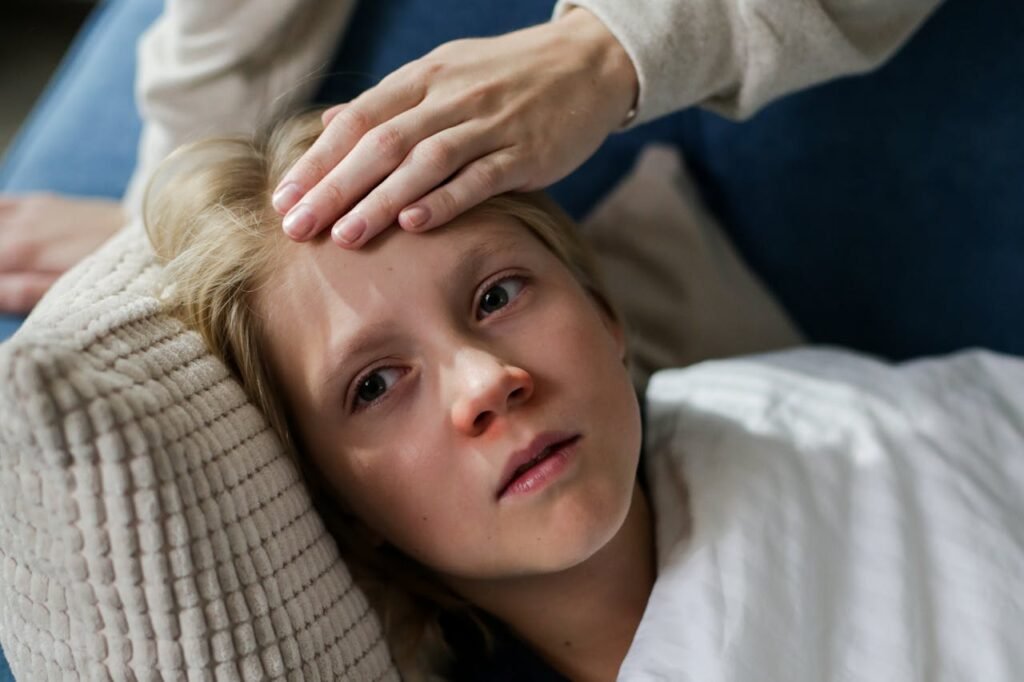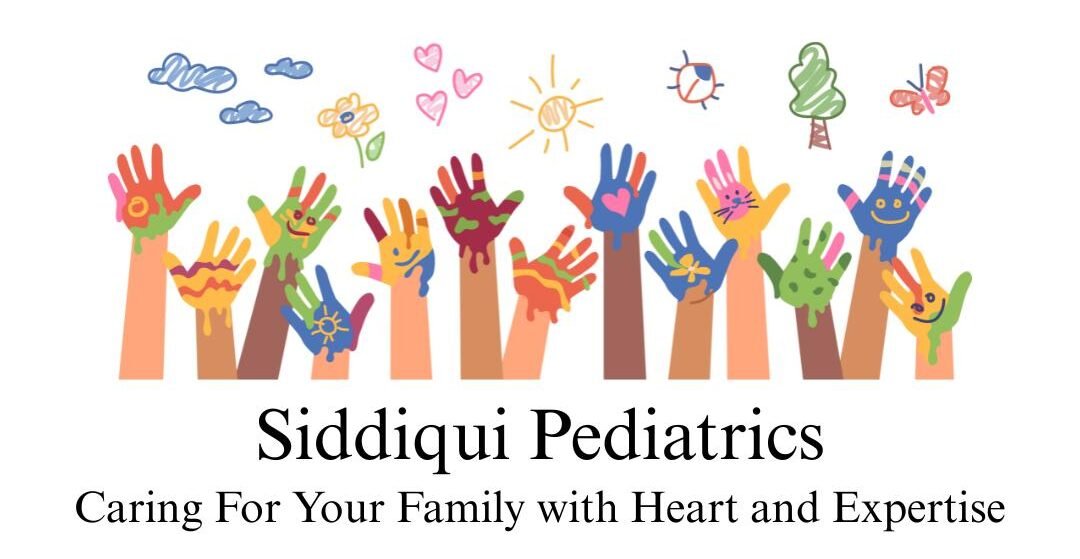When your child suddenly spikes a high fever, it can feel like an alarm bell in your brain. Sweat, chills, flushed cheeks—these symptoms stir every protective instinct. But does every fever require a rush to urgent care? Or are there moments when it’s safer and smarter to manage symptoms at home? As pediatricians, we’ve seen firsthand how empowering it is for parents to understand fever behavior and respond with calm, informed action.
This blog is dedicated to guiding you through the often confusing decision of when to stay home and when to seek professional care. You’ll leave knowing how to read the signs, what to watch for, and how to manage fever episodes in a way that supports your child’s overall health—not just their temperature reading.
What Is a Fever, Really?
Before jumping into the dos and don’ts, let’s clarify one thing: a fever isn’t a disease, it’s a response. The body uses it as a natural defense against viruses and bacteria. When your child’s internal temperature rises above the typical 98.6°F, their immune system is kicking into high gear.
In most cases, a fever is a sign the body is working properly, not that something is terribly wrong. Still, how you respond makes all the difference.

The Temperature Trap: It’s Not Just About the Number
One of the biggest misconceptions parents have is that any high number on the thermometer means an emergency. But how your child is acting is far more telling than the exact number.
Here’s a better way to approach fevers:
-
Low-grade fevers (99°F to 100.4°F): Monitor at home. Usually nothing to worry about.
-
Moderate fevers (100.4°F to 102°F): Keep your child hydrated and comfortable.
-
High fevers (above 102°F): Observe behavior. If your child is still playing, eating, and responding well, you can often manage this at home.
-
Very high fevers (104°F and above): These warrant careful attention but still don’t always require emergency care unless paired with concerning symptoms.
Behavior First: The Pediatrician’s Rule of Thumb
As pediatricians, we focus less on the thermometer and more on behavior. A child with a 103°F fever who’s drinking fluids, interacting, and resting comfortably is less concerning than a child with a 101°F fever who’s listless, dehydrated, or disoriented.
Ask yourself these key questions:
-
Is your child drinking and urinating normally?
-
Are they waking up for feedings or snacks?
-
Are they responsive and alert during waking hours?
-
Is their skin colour normal (not pale or bluish)?
-
Are they breathing comfortably?
If your answers are “yes,” your child is likely okay to stay home for monitoring.
When to Stay Home and Monitor
There are several circumstances when it’s appropriate—and even ideal—to care for your child at home during a fever. Home becomes a sanctuary of healing when you have the right tools and knowledge.
Here are ideal stay-home scenarios:
-
Child is over 6 months old
-
Fever is under 104°F
-
Hydration is adequate
-
No vomiting or diarrhea
-
Child is alert and interactive
Give fever-reducing medications like acetaminophen or ibuprofen only as recommended by your pediatrician—not just to reduce numbers, but to make your child comfortable enough to rest and hydrate.
Speaking of hydration, fevers often cause fluid loss, so offering water, breast milk, or electrolyte-rich fluids is key. If you haven’t read it yet, we recommend this full guide on why hydration matters and how to make it fun for kids. It’s packed with pediatrician-approved tips that are especially helpful during fever episodes.
When It’s Time to Call the Pediatrician
While fevers often pass on their own, some red flags signal it’s time to pick up the phone or head to the clinic.
Call your pediatrician if:
-
The fever lasts more than three consecutive days
-
Your child has underlying medical conditions or is immunocompromised
-
There’s difficulty breathing, persistent vomiting, or refusal to eat/drink
-
The fever goes above 104°F repeatedly, even after medication
-
Your child experiences a seizure (febrile seizures are common but should always be evaluated)
-
There are signs of dehydration (dry mouth, no tears, sunken eyes, dark urine)
-
You have an infant under 3 months with a fever over 100.4°F (this is a medical emergency)
Remember, it’s never overreacting to call your pediatrician if you’re unsure. We’d rather you reach out early than wait too long.
The Emotional Impact of Fevers on Kids and Parents
Fevers don’t just affect the body—they shake the household. Your child might feel scared, clingy, or irritable. And let’s be honest—so do parents. Your instinct is to do something, but panic rarely helps.
This is where your pediatrician becomes your steady hand. By building a trusting relationship, you’ll feel less anxiety and more clarity in these moments. This emotional support is crucial during fever episodes, especially when paired with other factors like seasonal mood swings that can make kids even more reactive and sensitive.
Managing High Fevers with a Home Care Plan
Here’s a step-by-step pediatrician-endorsed fever protocol you can use at home:
-
Check the temp with a digital thermometer.
-
Assess behaviour, not just numbers.
-
Dress your child in light clothing.
-
Offer clear fluids every 30–60 minutes.
-
Use lukewarm baths—not cold—for comfort.
-
Administer medications only as needed and as directed.
-
Keep your child rested, but allow calm play if energy returns.
-
Record temperatures and symptoms if the fever persists more than a day.
A solid plan will help you feel confident in the moment—and may even reduce unnecessary visits.
The Danger of Overmedication and “Chasing the Number”
Parents often fall into the trap of trying to “break the fever” instead of supporting the child. Constantly rotating between acetaminophen and ibuprofen, waking kids to give doses, and overchecking temps can cause more harm than help.
Your pediatrician’s goal is comfort, not numbers. If your child is resting peacefully at 102°F, let them rest.
What to Expect After the Fever Breaks

The end of a fever doesn’t mean your job is done. Many children go through what we call “post-fever fatigue.” They may still need an extra day or two at home to fully bounce back.
Watch for:
-
Lingering tiredness
-
Changes in appetite
-
Mood swings or irritability
-
Mild coughing or congestion as symptoms resolve
Use this time to continue hydration, offer nutrient-rich meals, and slowly reintroduce screen-free activities. Keeping your child emotionally regulated helps prevent setbacks in recovery.
Fever and School: When to Return
Schools usually follow the 24-hour rule: kids should be fever-free without medication for at least a full day before returning. This prevents contagion and gives your child the best chance to re-enter school strong.
Reassurance for Parents: You’re Not Alone
Fever episodes feel lonely—but they don’t have to. The right pediatric care provides not just guidance but reassurance. When in doubt, we’re here to interpret symptoms, calm nerves, and help you avoid unnecessary ER visits.
The strength of pediatric care lies in partnership—you, your child, and your pediatrician working together to navigate health episodes from a place of confidence, not fear.
Turn Fear into Fluency
The more you understand about fevers, the less fearful they feel. Knowing when to stay home and when to seek care is a powerful tool—and it’s one that every parent deserves to have.
Remember, pediatric care isn’t just about treating symptoms. It’s about empowering families with the tools, knowledge, and compassion they need for moments like these.
For more child wellness guidance grounded in pediatric expertise, you can also explore our blog on seasonal mood changes, and if hydration during fevers has you concerned, don’t miss our pediatric-approved tips on keeping kids drinking water with fun and ease.
Stay informed. Stay supported. And remember: high fevers don’t have to mean high anxiety—not when you have the right pediatric team by your side.
